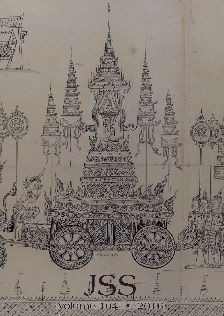Kra-Dai and the Proto-History of South China and Vietnam
Main Article Content
Abstract
The onset of the Zhou dynasty at the end of the second millennium BCE coincides roughly with the establishment of the Chǔ (tshraʔ / khra C) fiefdom and the emergence of the ethnolinguistic stock known as Kra-Dai (Tai-Kadai). The ancestors of the Kra family proper, situated in the southwestern portion of Chǔ, began to disperse ostensibly as a result of upheavals surrounding the end of Shang, the beginning of Western Zhou, and the gradual rise of Chǔ into a full-fledged kingdom by the 8th century BCE. Beginning with this underlying premise and the stance of comparative and historical linguistics, the present paper provides, in a chronological frame, a hopefully more probable picture of the ethnolinguistic realities of China south of the Yangtze and relevant parts of Southeast Asia, including the geography past and present, of language stocks and families, their classification, time-depth, and the possible relationships between them. The focus is primarily on the Kra-Dai stock of language families up until the end of the Han Dynasty in the 2nd century CE, and secondarily up to the 11th century. Attention is given to what can be deduced or abduced with respect to ethnic identities in pre-Yue Lingnan and Annam, and to other questions such as whether or not Kam-Sui should be included under the rubric of Yue and the position of Mường in early Vietnam.


